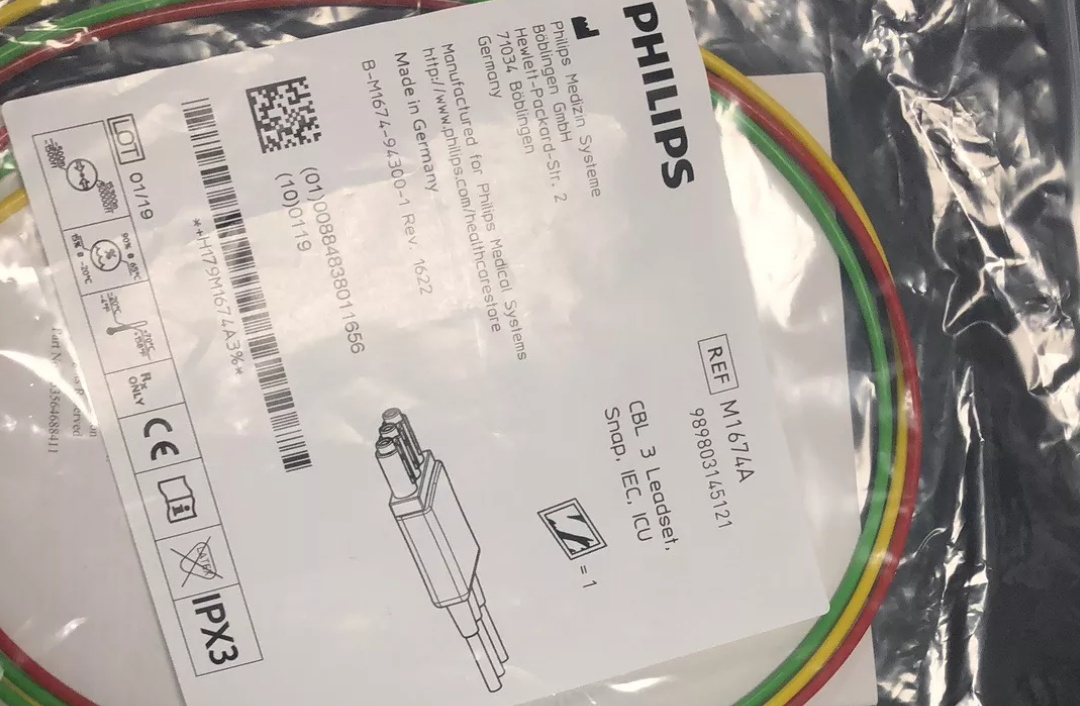AED MODE External Pacing MODE Capnography Mainstream/Sidestream NBP pressure SpO2
23.5 cm (H) x 29 cm (W) x 20.5 cm (D) 5.66KG
The Efficia DFM100 is an affordable solution that use biphasic technology to deliver shock for up to 200 Joules, with the ability to adapt to changes in your clinical environment, resource needs, or critical care guidelines.
Device configurations range from a basic defibrillator to a fully-featured defibrillator/monitor with optional AED mode, pacing, and monitoring parameters. DFM100 uses a thermal recorder to print reports ECG waves etc.

OPTIONS:
AED MODE
External Pacing MODE
Capnography Mainstream/Sidestream
NBP pressure
SpO2
The Efficia DFM100 defibrillator/monitor is designed to help you meet the demands of patient care in the pre-hospital and hospital environment. With field-proven Philips technology, the Efficia DFM100 offers core functionality with a scalable feature set and improved cost of ownership, allowing you to enhance patient care, wherever the patient is located. Using rechargeable Lithium Battery, DFM100 can monitor (ECG – 3lead or 5 lead), for up to 3,5 h or can deliver 100 Shocks (200J each).

1 Working environment:
1.1 Maximum working and storage altitude ≥15000 feet (4500 meters)
1.2 Working temperature 0 to 45℃, storage temperature -20 to 70℃
1.3 Ambient humidity: 15% to 95%
2 Performance requirements:
#2.1 Low-energy intelligent biphasic truncated wave, adjust the defibrillation waveform according to the patient's impedance to maintain the most effective transcardiac current.
#2.2 Display screen ≥7-inch high-resolution color TFT display screen.
#2.3 Maximum energy of defibrillation energy ≤200J
#2.4 The time from charging to the maximum energy marked on the defibrillator each time ≤ 6 seconds. In the AED adult mode, the fixed energy selection is ≤160J (important parameters)
#2.5 The minimum manual defibrillation energy is 1J
2.6 The AED function has one-button switching between adult and infant child modes
#2.7 Adult and child integrated defibrillation electrode pads, with chest wall impedance contact indicator light
#2.8 The defibrillation energy is adjusted by knob selection instead of button selection, which is convenient and fast and saves rescue time.
2.9 Standard manual defibrillation, AED and synchronous cardioversion functions
#2.10 With fast shock technology, the time from starting AED mode to power-on completion is ≤ 8 seconds
2.11 The host has ≥3 waveform displays
2.12 Continuous ECG monitoring can be performed, and ≥9 common heart rate/arrhythmia alarms can be identified, including too fast/too slow heart rate, asystole, ventricular fibrillation/ventricular tachycardia, ventricular tachycardia, extreme tachycardia, extreme bradycardia, PVC rate, pacing failure, and pacemaker failure.
2.13 Standard three-lead ECG monitoring function, upgradeable to five-lead ECG monitoring
#2.14 Frequency response: diagnostic 0.05-150Hz monitoring 0.15-40Hz
2.15 With event marking function
2.16 With vital signs trend review function
#2.17 With knob-type smart menu navigation button, convenient and quick function positioning
3 Battery
3.1 The battery has a power capacity status indicator
3.2 When all functions of the device are fully turned on, the battery life is ≥2.5 hours, ensuring continuous power supply during the patient's transportation
#3.3 Rechargeable lithium battery, ≥100 times of maximum energy charging/shock
3.4 When the battery is low, the host can also perform ≥10 minutes of monitoring time and ≥6 times of maximum energy discharge
3.5 The battery has fast charging technology, which can be charged to 80% in ≤2 hours and 100% in ≤3 hours
#4 Safety:
#4.1 The host has an intelligent shutdown self-test function. Whether the device is in working state or shutdown state, it has regular self-test every hour, every day, and every week, instead of manually setting the test time, so that medical staff can check the health status of the device at any time.
#4.2 In the shutdown state, the host can still perform automatic detection without connecting to the AC power supply.
#4.3 The hourly regular self-test content includes: testing the battery, internal power supply and memory, etc.
#4.4 The daily regular self-test content includes: testing the battery, internal power supply, memory, internal battery clock, defibrillator function, ECG, and printer. The defibrillator function test includes low-energy internal discharge. When the ECG cable and AED electrodes are connected, the cable and electrodes are also tested.
#4.5 The weekly regular self-test content must include: performing the "daily self-test" described above, and sending a high-energy internal discharge to further test the defibrillator circuit.
#4.6 The host can print the report results of the most recent ≥1 hourly self-test, the most recent ≥5 daily self-tests, and the most recent ≥50 weekly self-tests.
#4.7 The host has a self-test standby status light indicator function, making the instrument health status clear at a glance.
5 Data storage:
#5.1 Internal event summary can store ≥8 hours of 2 continuous ECG waveforms, 1 Pleth wave, 1 carbon dioxide wave, research wave (AED mode only) events and trend data in each event summary.
5.2 Up to 50 event summaries of about 30 minutes can be stored
5.3 Storage contents include: event summary, vital signs trend, configuration, status record and device information
6 Printer:
6.1≥50mm thermal array printer
6.2 Continuous ECG bar graph: real-time or 10-second delay printing of main ECG leads, with event annotations and measurement results
6.3 Automatic printing: the recorder can be configured to automatically print marked events, charging, shock and alarm
6.4 Report: event summary, vital signs trend, operation inspection, configuration, status record and device information
6.5 Paper feed speed 25mm/sec
6.6 Paper size: ≥50mm × 20m
7 Other requirements:
#7.1 Overall weight ≤6.2KG (including main unit, electrode plate and battery)
#7.2 Waterproof/solid infiltration resistance ≥IP54
#7.3 It can meet the needs of the hospital's future expansion of monitoring functions and can be upgraded to SPO2, NIBP, EtCO2 and other functions

Unique advantages
The Efficia DFM100 defibrillator/monitor is designed to help you meet the demands of patient care in the pre-hospital and hospital environment. With field-proven Philips technology, the Efficia DFM100 offers core functionality with a scalable feature set and improved cost of ownership, allowing you to enhance patient care, wherever the patient is located.